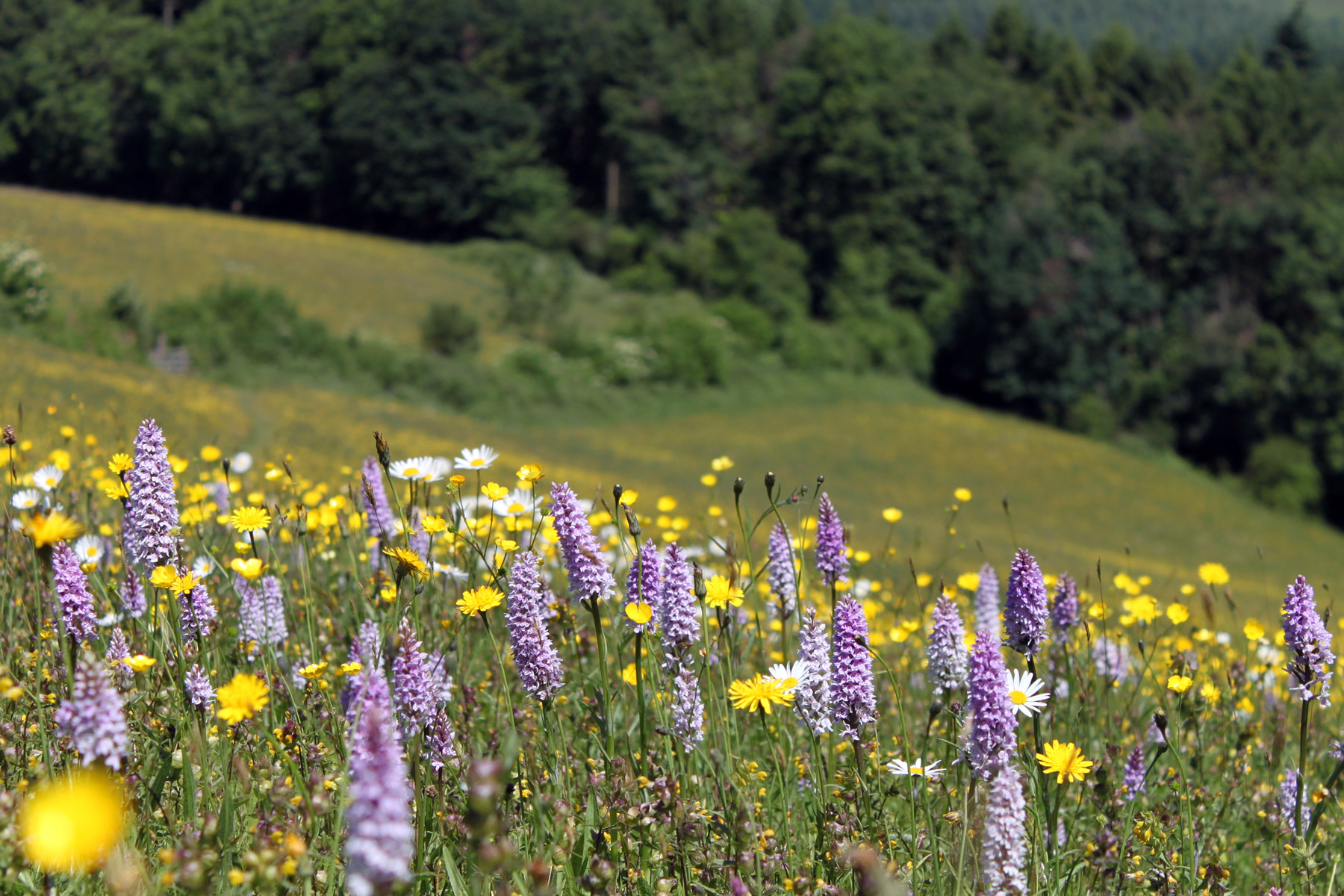Herefordshire Meadows Group spent 22 June at Hurstans Coronation Meadows in Sollers Hope hosted by Fiona and Chips Fyshe learning a detailed monitoring technique with Stuart Hedley as their trainer and in collaboration with Joe Costley of Plantlife. We used a 1 x 1 m quadrat subdivided into 9 smaller squares
We did the first quadrat together, refreshing ID skills and discussing how this method provides and estimate of wildflower abundance. This is in addition to the rapid method of grassland assessment demonstrated at Clifford which just gave presence and absence in each quadrat.
We learned that bents have 1-flowered spikelets in contrast with many other kinds of open panicled grasses such as bromes, meadow grasses and fescues which have tiers of mutiple flowers within each spikelet – see the sketch above.
Working in smaller groups we completed 20 quadrats and the results are available here. A more detailed analysis will be done over the coming winter.
This monitoring work is really helpful to evaluate the the effects of the wildflower seeding that was done in strips across each field in 2015 using seed from nearby Plantlife Reserve at Joan’s Hill Farm. Since then many species from Joan’s Hill have become well established in the strips and with successive hay harvests some are gradually spreading across the fields at Hurstans. A short sequence of photographs of the seed strewing in 2015 shows the importance of careful preparation of the receptor site by harrowing the existing sward. This gives good soil – seed contact without burying the seed AND also sets back the grasses so that the introduced wildflowers aren’t smothered in the first year and get the best chance to establish.
Key points learned during the day included
- this is collaborative work – ideally you need a scribe to record the results and it’s good to work in small groups as you are learning the technique and consolidating plant ID skills.
- One person should be responsible for QAing the results and asking for ID confirmation if necessary
- Start by making a list of the species present in the 1 x 1 m quadrat and then go back through the list noting how many of the 9 squares contain each species.
- Take regular breaks – you have to focus hard until all 9 squares are completed – refreshments were on hand between each quadrat
- If very dry, brittle and tall then start with the grasses to avoid all the heads falling off as you ID the broad leaved plants
- After this training Herefordshire Meadows members will be able to monitor their meadow restoration, creation and enhancement projects in future years.
- The species recovery trust has a useful guide to key characteristics of common grasses, sedges and rushes
- Current top ID book recommended by Herefordshire botanical recorder Peter Garner is Collins Flower Guide by Streeter, Hart Davis et al. or The Wild Flower Key by Francis Rose




